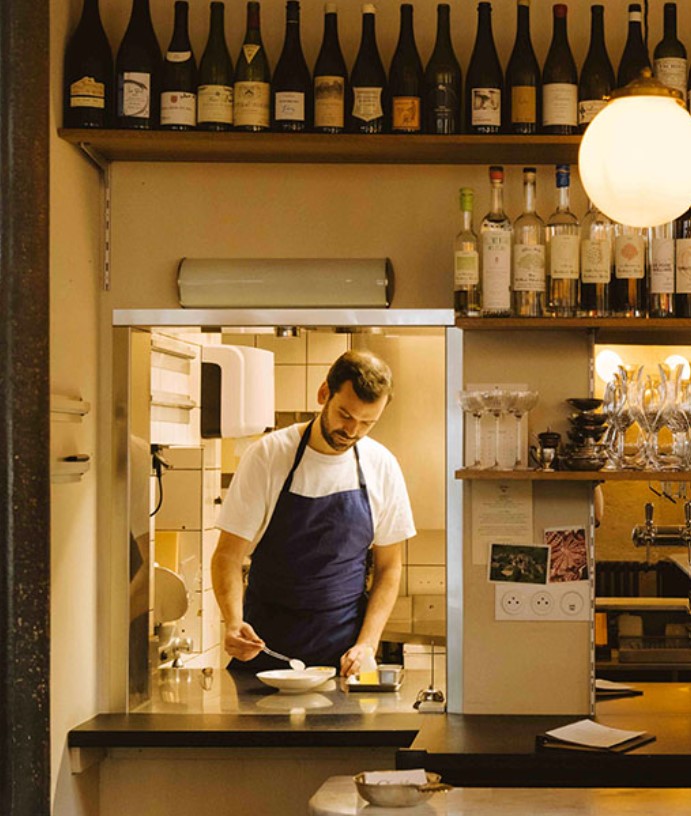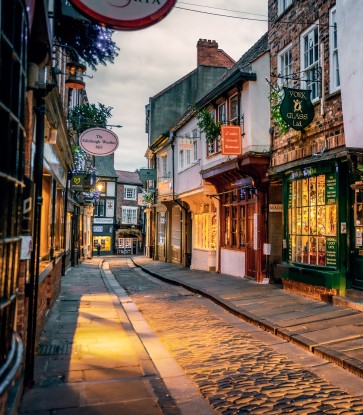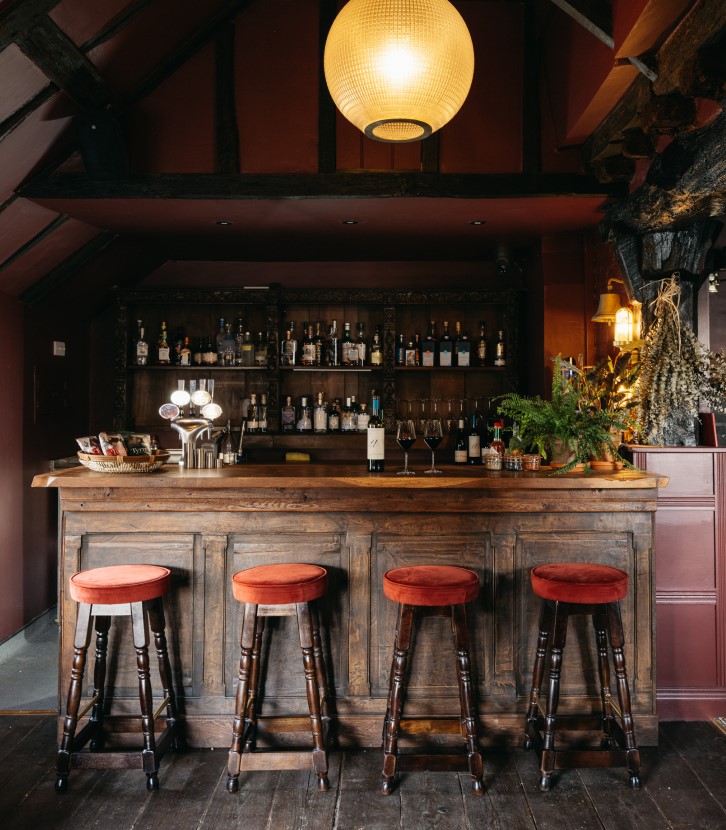Yorkshire’s Howardian Hills sit in a part of the country replete with tourist attractions. Covering a relatively modest 79 square miles, some visitors may make the mistake of overlooking them in favour of illustrious neighbours like the city of York and the North York Moors. But for those in search of a restorative walking holiday, there can be few better destinations.
Richly deserving their status as a National Landscape, the area’s hills, ridges and valleys are patchworked with hedgerows, farms and woodland. Climbs to the higher ground are rewarded with sweeping vistas of the surroundings, dotted with picturesque villages, atmospheric ruins and grand historic houses. There’s an endless array of walking routes to suit different tastes and levels too. And even better, many can be rounded off with fantastic food and drink.

The abundance of accessible walking options, combined with the area’s compact nature, mean a trip needn’t require military-grade planning. An Ordnance Survey map will certainly serve you well, but many locations provide their own guides and recommendations, and there’s plenty of scope to adapt itineraries to suit your preferences and needs. Since many routes are circular rather than point-to-point, it will often make sense for visitors to stay in one location for a period of time and use it as a base for trips.
So, let’s take a tour of the Howardian Hills, looking at some specific areas with handy bases for exploring each one. You can do the entire trip in one, or take your pick between the regions – just remember to pack some sturdy shoes.
An Elegant Castle and Riverside Ruins
Our tour starts in the market town of Malton. Sitting at the south-eastern boundary of the Hills, it’s just half an hour’s drive from York, and a perfect base for resting and refuelling in between walks. Known as Yorkshire’s food capital, it holds a food festival every May, as well as a monthly market including live music and street food along with independent stalls. The town is home to numerous delis, tea shops and cafés, plus an array of artisan producers creating everything from coffee and cakes to gelato and gin.
The Talbot Malton, a 17th-century coaching inn close to the town centre, has 26 rooms, including a deluxe four-poster suite. Most are dog-friendly, and staff are happy to recommend walks suitable for four-legged friends. In addition to a table service restaurant, the hotel offers relaxed bar dining and afternoon teas.
If you’ve decided to base yourself in this part of the hills, an essential stop is the impressive Castle Howard. For more than 300 years, it’s been home to the Howard family, who lend their name to the area and still own land locally. The family’s 9,000-acre estate provides a range of rewarding walking possibilities. Popular circular routes include the pretty villages of Welburn and Coneysthorpe, with gorgeous panoramas of the house and its surroundings.

It's also well worth visiting the Castle itself and strolling within its elegant grounds. With features such as a walled garden, lakes, fountains and monuments, it’s easy to understand why this stately home has been a filming location for hit shows such as ‘Bridgerton’ and ‘Brideshead Revisited’. Those who venture into the building’s historic interiors, meanwhile, will find inspiring architecture – such as the striking 70ft dome above the Great Hall – and world-renowned art.
Picturesque Ruins and Charming Villages
South of Castle Howard, on the southern edge of the Howardian Hills and still easily explorable from Malton, lie the picturesque ruins of Kirkham Priory. Founded in the 12th century, the abbey was disbanded during Henry VIII’s reign but found a new lease of life in the Second World War, being used for training activities in preparation for D-Day and receiving a visit from Winston Churchill himself. The abbey sits in an attractive location on the River Derwent, making it a great destination for walks.
North and west of Castle Howard, you’ll find pretty villages that also make good starting or stopping-off points for walks. The official Howardian Hills body recommends four circular routes from Terrington, one of which includes views over to York Minster on a clear day. The hedgerows in the surrounding area are an important habitat for birds, with barn owls seen hunting over the fields some evenings. The actual village, with its stone cottages and Grade I listed church, is also a pleasant place to while away the hours.
Even further north are the villages of Slingsby and Hovingham. The former is used as a starting point for numerous routes through woods and farmland, including a cluster of breathtaking viewpoints. Hovingham, meanwhile, is home to one of the best restaurants in the Howardian Hills: mýse. While its location begins to edge into the north-eastern corner of the Hills, it’s still easily accessible from both Malton and all of the aforementioned beauty spots.

A stylish former pub, mýse serves a tasting menu based around top-notch local produce, with impeccable technique used to enhance the ingredients. Pickling and preserving are among the range of cooking methods used, which result in finely judged dishes that show Chef-Owner Joshua Overington’s strong grasp of flavours and balance. His wife and fellow owner Victoria runs the service with a smile, and dogs are welcome in the bar area. Hovingham itself is a lovely village, featuring the 18th-century Hovingham Hall.
Spa Treatments and Foraged Ingredients
Having fully explored the southern end of the Hills, head north to your next base: Helmsley. This market town is home to a beautiful walled garden and a medieval castle, and also sits at the beginning of a lovely walking route further north to the dramatic ruins of Rievaulx Abbey. A great place to stay in Helmsley is the MICHELIN Guide recommended Feversham Arms Hotel & Verbena Spa. This country house hotel’s well-appointed rooms, combined with the spa’s wellbeing treatments and heated outdoor pool, provide the perfect balm for weary limbs after a day’s walking.
A short drive from Helmsley takes you to Nunnington. The village is home to the National Trust-owned Nunnington Hall, a manor house featuring an organic walled garden and orchard. Nearby, Nunnington Studios includes a suite of independent shops and galleries with offerings such as ceramics, rare prints and coffee. Local walking routes take in yet more superb viewpoints – such as the Caulkleys Bank limestone ridge – with many following the banks of the River Rye. The area’s inhabitants include bullfinches, buzzards and brown hares. Many walks from Nunnington also include the small village of Stonegrave, which is notable for its 12th-century church.
For dinner, head back to The Plough in Wombleton, just a seven-minute drive from your hotel. This pretty 16th-century pub in an adorably named village is just what you need after a long day of walking and exploring. The charming interiors (think beams, fireplaces and traditional stylings) are a perfect fir with the hearty, no-nonsense food that sticks to the classics and is all the more enjoyable for it.

A Working Abbey and Hyper-Local Food
All of these delights shouldn’t mean you overlook the north-western part of the Howardian Hills, which also have their fair share of attractions. On the hills’ northern perimeter is the honey-stoned village of Ampleforth – notable for its working Benedictine monastery. You can learn about the history of Ampleforth Abbey at its visitor centre, while the 1,200-acre estate and surrounding areas include plenty of footpaths for rewarding walks. Recommended spots include Yearsley Woods – which have a set of tranquil fishponds – and a few miles’ walk from Ampleforth are the ruins of the once-great Byland Abbey, whose architecture inspired the designs of numerous other church buildings, including York Minster cathedral.
Overlooking Byland Abbey is the appropriately named The Abbey Inn, one of a number of Yorkshire ventures from local chef Tommy Banks and his family, including the nearby Black Swan in Oldstead. The latter both holds a MICHELIN Star and is part of the Green Star Community, reflecting the whole group’s commitment to local, seasonal produce. If you want to refuel with a Sunday roast at The Abbey Inn, you’ll be treated to rare-breed pork and Herdwick lamb reared a few miles away on the Banks family farm.
Produce from the farm and kitchen garden also feature prominently at The Black Swan, where the exceptional ingredients are treated with utmost skill and fine judgement from the kitchen team. Nine characterful guest bedrooms also make this an ideal spot to base yourself when visiting this corner of the Howardian Hills – with private patios for soaking up the beauty of the surroundings.

An alternative base in this region is fellow country inn The Durham Ox in Crayke. With a beamed ceiling, flagstone floor and oak panels, this 300-year-old, dog-friendly venue promises hearty food, fabulous views and comfortable cottages to rest up after a day of exploring the surrounding villages. While it would be unfair to single out any one as the area’s prettiest, there are several contenders in and around this part of the hills – all with unique characteristics. As well as being the former home of the novelist Laurence Sterne, charming Coxwold is close to Newburgh Priory, a Tudor country house where Oliver Cromwell’s body is reputed to be buried. Then there’s Kilburn, which sits beneath a 97m-long white horse carved into a hill.
Whichever villages you visit, routes you walk and food you eat, we hope you have a wonderful trip in the Howardian Hills, one of England’s underrated beauty spots.
Address Book
Ampleforth Abbey, York, YO62 4ENByland Abbey, Byland, Coxwold, North Yorkshire, YO61 4BD
Castle Howard, Castle Howard Estate, York, YO60 7DA
Helmsley Castle: Castlegate, Helmsley, North Yorkshire, YO62 5AB
Helmsley Walled Garden, Cleveland Way, Helmsley, York, YO62 5AH
Kirkham Priory, Whitwell on the Hill, Malton, North Yorkshire, YO60 7JS
Malton Market, Market Place, Malton, YO17 7LW
Newburgh Priory, Coxwold, York, YO61 4AS
Nunnington Hall, Nunnington, near York, North Yorkshire, YO62 5UY
Nunnington Studios, Low Farm, Low Street, Nunnington, York, YO62 5UR
Rievaulx Abbey, Rievaulx, Nr Helmsley, North Yorkshire, YO62 5LB
Hero Image: The Howardian Hills (© Matthew Pollard/iStock)


















